HVAC System in Pharmaceutical Industry
Incorporating HVAC System in Pharmaceutical Industry is a highly sophisticated task. Not only the design and calculations need to be precise but also the execution / installation and Testing / Commissioning need to be methodically accurate. In a typical pharmaceutical plant or factory, organic & inorganic solutions, medicines, capsules, tablets, etc. are prepared. Therefore, the right temperature, right humidity levels, and right pressure need to be maintained. Otherwise, the organic & inorganic solutions, medicines, capsules, tablets run the risk of being contaminated.
Unlike the standard office buildings, malls, warehouses, hotels, auditoriums, and several other commercial buildings, the pharmaceutical facilities require a customized HVAC system. An HVAC system in pharmaceutical industry requires ‘supply ductwork’ with a series of filters including HEPA filters, ‘return ductwork’ with risers, and dedicated Air Handling Units for individual rooms or zones. These Air handling units (AHU units) are connected to either DX / VRF VRV outdoor units or a chiller plant. The air handling units designed for the Pharma industry require higher static pressure normally in the range of 125 mm WG. The AHU units have both supply and return ductwork. The goal is to maintain the desired temperature, desired pressure, and desired humidity inside the room. Therefore, significant emphasis is given on design while implementing an HVAC System in Pharma Industry.
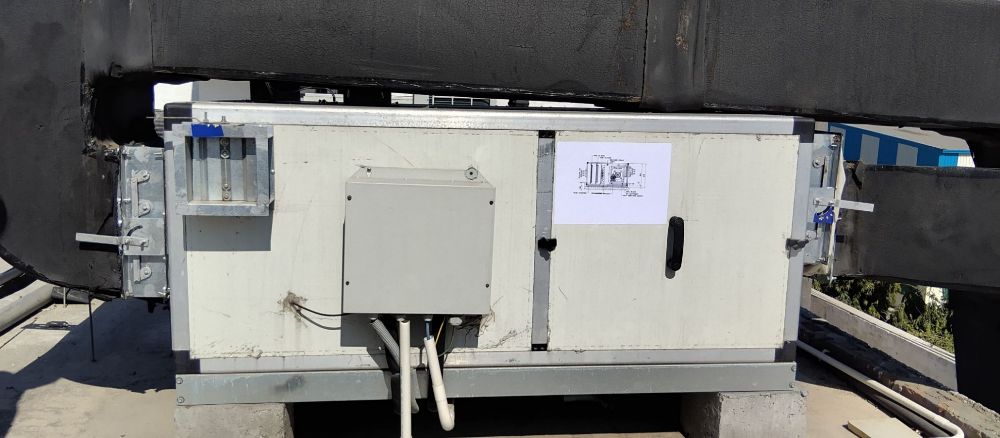
And uniformity of temperature, humidity, pressure is not desired while designing the HVAC in Pharma. In some areas or rooms, 25 degrees Celsius with 55% humidity and positive pressure is desired, while in other areas or rooms, 18 degrees Celsius with 25% humidity and positive pressure is required.
Positive pressure is desired in order to stop the airflow from adjoining lobby corridors to the designated rooms or areas or zones. This helps in ensuring that organic & inorganic solutions, medicines, capsules, tablets are not contaminated with pollutants, bacterias, viruses from outside.
Therefore, at the time of designing the HVAC in Pharmaceutical Industry, the HVAC designer sits with the client in order to assess the requirements carefully for each and every room or zone or area. In addition to the dimensions, requirements such as desired temperature, humidity, pressure, and air change per hour (ACPH) are noted. Once all the data is available, the HVAC design team calculates the heating load keeping in mind the desired temperature, humidity level, and pressure. An important point to note here is any changes in the above 3 parameters completely alter the heating load calculations.
For example, instead of the humidity levels (RH) of 55%, the desired humidity levels are 25%. In this scenario, not only the heating load changes but also the type of air conditioning unit changes. To maintain humidity levels of 45% - 55%, conventional air conditioning solutions such as AHU coupled with DX or VRF or chiller units are used. However, in order to achieve humidity levels of 25%, duct heating units or dehumidification systems with AHU coupled with increased capacity of DX or VRF or chiller units are used. Therefore, it is imperative on the part of the HVAC design team to understand the requirements carefully. HVAC in Pharma Industry is all about design. And to get the design and heating load calculations right, requirements must be understood properly.
TheSmartHVAC focuses on requirements shared by the Pharmaceutical clients. It's only when the requirements have been understood completely, that heating load calculations and selection of the right kind of HVAC equipment are presented to the client along with the complete BOQ. Following is the typical process for HVAC for the Pharma Industry:
- Requirement Gathering Stage
As the name suggests, in this stage, the HVAC company sits with the Pharmaceutical company in order to understand the scope of work including the assessment of facility on which HVAC System needs to be installed, the kind of pharmaceutical products that are going to be manufactured in that facility, and the desired temperature, humidity, and pressure for each and every room or area within the facility under consideration. The pharmaceutical client shares the latest AUTOCAD drawing of the facility along with the desired parameters (temperature, pressure, humidity, and ACPH).
The pharma company or lab or hospital may have different departments for different purposes. And therefore, the company will do its zoning. And the rooms or mini areas will be carved out from the larger layout for specific applications. Once that layout is presented to the HVAC professionals, they study the layout methodically and then in consultation with the pharma company representatives, HVAC zoning is carried out. This HVAC zoning basically determines which mini areas or rooms can be clubbed together and which mini areas or rooms need a stand alone HVAC system. By stand alone HVAC system, it is generally implied the dedicated air handling unit for that particular mini area or room is needed. The area assessment further helps in next steps in the HVAC design for the pharmaceutical industry.
- HVAC Design - Heat Load Calculations
Based on the presented AUTOCAD drawing and desired parameters (temperature, pressure, humidity, ACPH), the HVAC company now calculates the heating load for each and every room or area or zone. The heating load calculations should be precise. The heating load calculations should take into consideration the leakages that may take place at the Supply Air terminal level. In a typical HVAC installation for the Pharma industry, the HEPA filters are used at the Supply Air terminal level. The loss in static pressure and loss in air volume takes place while the supply air passes through the HEPA filters. And this should be considered at the time of heating load calculations. Heating load is calculated for each and every zone in CFM (Cubic Feet per Minute). Once the CFM has been calculated keeping in mind the dimensions, ACPH, desired temperature, desired Humidity, and desired pressure levels for that particular room, then, that number is converted to the nearest number in Tons of Refrigeration or TR. Heating load calculations are the most important element in any HVAC system and therefore heating load calculations should be carried out by HVAC domain experts. Sometimes, a heating load software is also used. Likewise, there is software to estimate the correct size of the ducting work.
- HVAC Design - Selection of Right Kind of HVAC Equipment
Once the heating load has been estimated, the next step is to select the right kind of HVAC equipment. And it is an extremely important step especially for the HVAC in Pharmaceutical industry. In many instances, HVAC in Pharma industry is designed for 25-30% RH (Humidity) level. And therefore, the standard AHU connected to a DX / VRF VRV / Chiller system does not work. A special arrangement is required to achieve 25-30% RH (Humidity) level. Pre cooling - dehumidification system - post cooling AHU system connected to DX / VRF VRV / Chiller system is installed in order to achieve 25-30% RH (Humidity) level. And that adds to the overall cost of the HVAC system for the Pharma company. The Air Handling Unit (AHU) in itself is specifically designed for the Pharma industry. The AHU for the Pharma industry comprises pre filter, mixing box, AHU coil, motor, fan section, and then fine filter. Supply, Return, Exhaust, Fresh Air dampers are also provided in a typical AHU. This AHU can either be connected to the DX unit or VRF VRV system or the chiller system. Depending on the overall operations and the overall heat load, the outdoor unit is chosen. In case, the overall heat load is in excess of 500 Tons and the Pharma company needs to operate for 24 hours a day, then, in that scenario, it is recommended to use the chiller system as the outdoor unit. This chiller system can be connected to multiple numbers of AHUs. In case, the overall heat load is between 100 to 500 Tons, then, VRF VRV outdoor units are highly suitable. VRF VRV units are inverter technology based units and therefore VRF VRV are energy efficient units. In case, the heating load is small, then, standard 5.5 ton, or 8.5 ton, or 11 ton DX outdoor unit can be connected to the AHU. The supply duct and return duct are then connected to the AHU. The supply ductwork usually comprises MS Housing with HEPA filters and SS Grills. And the return ductwork usually comprises return risers with dampers and SS Grills.
Unlike the standard office spaces, malls, hotels, warehouses, or any other commercial space, the pressure is a key determinant while designing an HVAC system for the Pharma industry. Why? This is to make sure that no external gasses or particles or viruses or bacterias enter the mini area or room under consideration. And how is it achieved? By creating sufficient air pressure inside that mini area or room. Therefore, Air handling units with high static pressure are needed for the HVAC in Pharma.
The AHU system in pharmaceutical industry is different from a typical AHU system. Firstly, the AHUs are designed for higher static pressure. Typically in the range of 125 mm WG. This is done to ensure that substantial pressure is created inside the mini area or room so that no outside particle, bacteria, virus, gas enters the mini area or room under consideration. Secondly, the AHU system in pharmaceutical industry comprises supply and return ductwork. Therefore, the mixing box is an extremely important part of the AHU designed for the pharma sector. These AHUs are also designed with a ‘thermal break profile’ instead of the standard ‘extruded hollow profile’. Almost every single time the backward curved blower is used in AHUs manufactured for the Pharma industry.
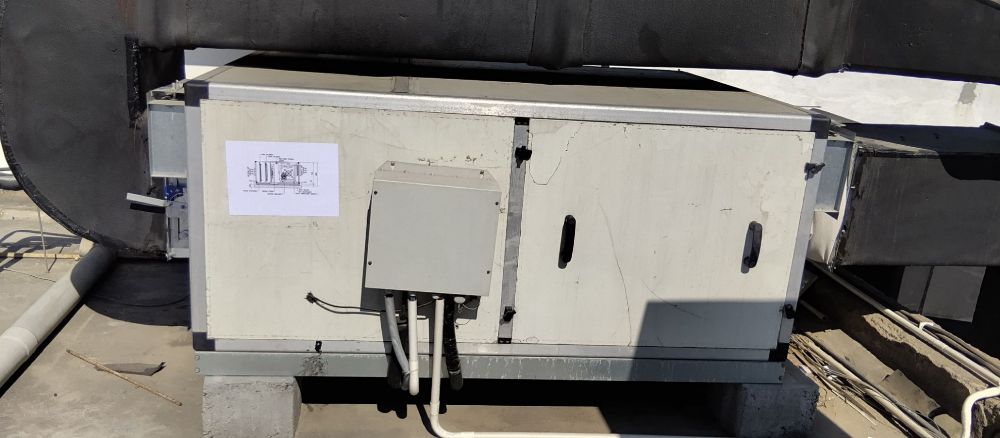
The outdoor units can be ‘DX Cooling only Ductable outdoor units’ or ‘DX hot and cold VRF VRV units’ or ‘a chiller plant’. Depending on the size of the project, either a chiller plant is installed or Ductable / VRF VRV units are used. DX Cooling only Ductable outdoor units are the least expensive units. Whereas VRF VRV or Chiller plant installation costs a lot more. In case of multiple mini areas or rooms that require standalone AHUs, it is recommended to go ahead with dedicated DX cooling only Ductable outdoor units for those standalone AHUs. This way, it is relatively easy to manage the functioning of that particular AHU unit and the associated DX Ductable unit. The capital expenditure as well as operating expenditure is controlled in this scenario. While a chiller plant or VRF VRV units are suitable for large spaces in the pharma industry.
- BOQ Preparation and Quotation
Once the right kind of HVAC equipment has been selected for the Pharma industry, the next step is to prepare the BOQ (Bill of Quantity) and the final quotation. This BOQ and quotation is presented to the management of the Pharmaceutical company. The pharmaceutical company analyzes the heating load calculations, overall cost of the HVAC system, energy efficiency of the HVAC system being proposed. The pharmaceutical industry also compares 3-4 quotes before taking a final decision. Presentations, negotiations, discussions, and revisions take place during this stage. And therefore, this process takes time.
- Panel Work
Panel work is at the heart of any HVAC in pharma industry. There are wall panels and ceiling panels. These panels are typically Modular Wall panels of Pre coated GI sheet with a thickness of 0.5 mm on both sides. The panels are insulated with PUF of density 42 kg/m3 between both the sheets. The edges are sealed with clean room compatible RTV sealant. The Panel is typically of 80 mm thickness with a GI profile. Therefore, PUF and sealants are used extensively in any panel work for the pharma industry. This is done to ensure that no heat transfer takes place between the mini area or room and the ambience.
- Execution / Installation
Once the pharmaceutical company has selected the ideal HVAC company for the implementation of the HVAC system, the selected HVAC company submits the AUTOCAD drawings. This AUTOCAD drawing now becomes the blueprint on which the HVAC material and equipment are installed. This AUTOCAD drawing contains the smallest of details including the placement of outdoor units, Capacity and the size of the outdoor units (DX units or VRF VRV units or Chiller units), placement of AHUs, Capacity and the Size of the AHUs, copper piping work, MS piping work, Ducting work, Valve sets, Supply and Return Grills, Communication cable, Drain piping work. The design engineer in charge of the execution ensures that the execution team installs the HVAC material and equipment as per the approved AUTOCAD drawing. Any changes during the execution phase shall also be reflected in the HVAC AUTOCAD drawing.
The supply ductwork is planned as usual except the implementation of HEPA filters with housing in each and every vent in the supply duct. Therefore, instead of the standard diffusers or grills, the supply ductwork in a Pharma setup requires installation of HEPA filters in each and every vent. This is done to ensure that conditioned air is filtered perfectly before it enters the mini area or room. HEPA Filter Housing comprises Aluminum Extruded Mini Pleat HEPA Housing with Thickness of 1.2 mm (18G), GI Volume Control damper, Canvas Connection DOP Port. This HEPA Filter Housing is typically suitable for HEPA filters of size 610 mm x 610 mm and 450 mm x 450 mm.
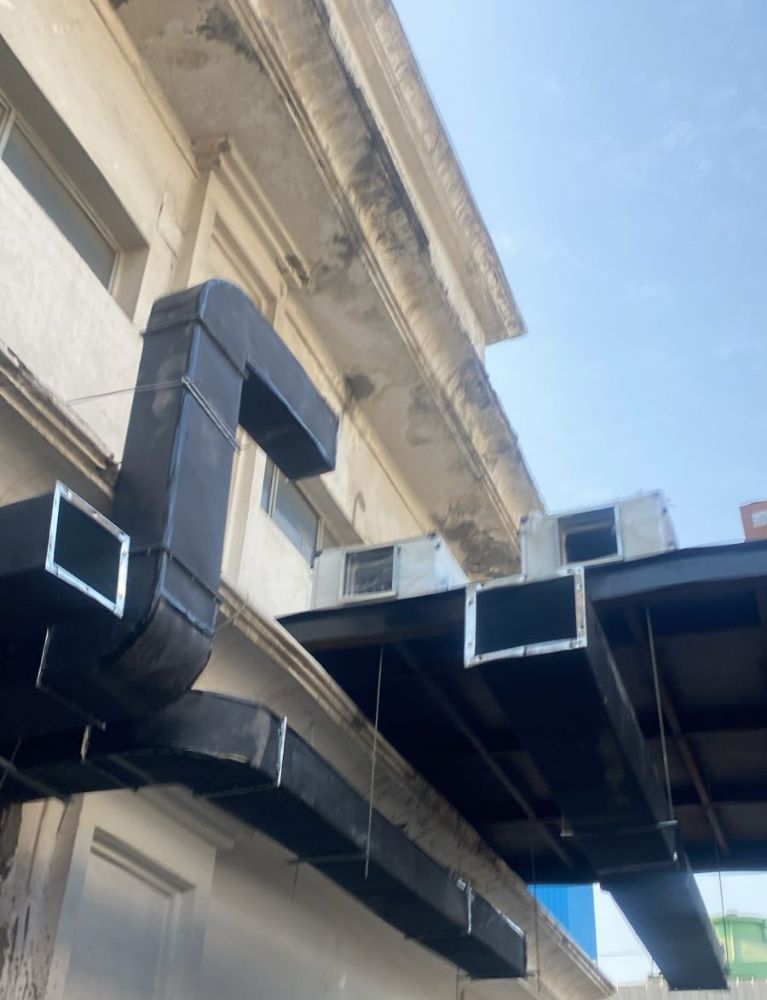
Unlike the typical hotels, malls, office spaces, warehouses, auditoriums, or other commercial spaces, the return ductwork is extremely important in an HVAC system in Pharma industry. The air handling units comprise the supply mouth as well as return mouth. And the return ductwork from the mini area or room goes all the way to the return mouth in order to connect to the AHU supplying conditioned air to the mini area or room under consideration. The return air mixes with the fresh air in the mixing chamber inside the air handling unit. While the supply ductwork comprises HEPA filters with housing, the return ductwork comprises riser filters. Typically, as per the thumb rule, if there is a one supply vent, then, ideally there should be two return vents in the mini area or room under consideration. This is done to ensure that the Air handling unit is fed perfectly with the return air.
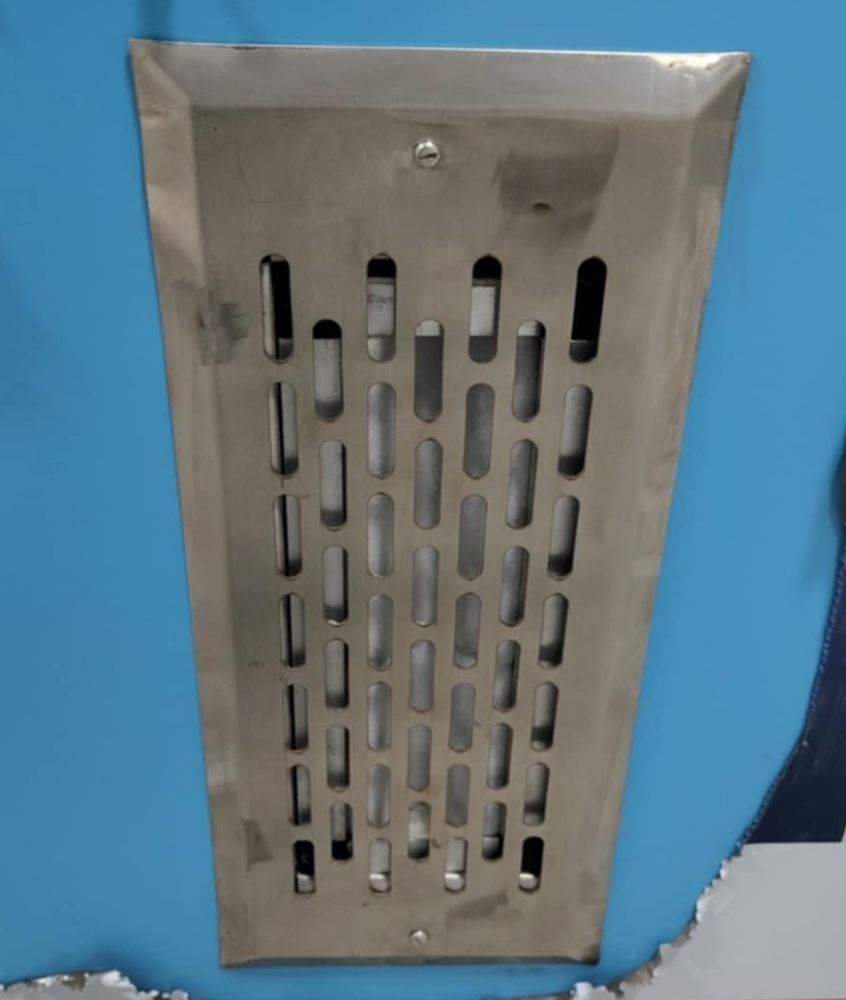
- Testing and Commissioning
Once the HVAC material and equipment have been installed as per the approved AUTOCAD drawing, then, the next step is to commission the entire system. The commissioning work typically involves nitrogen testing work, vacuum work, flushing work, and then the release of refrigerant or chilled water in the Air handling unit. The Air handling unit is now tested for 2-3 days in order to ensure that parameters such as desired airflow in CFM (Cubic Feet per Minute), desired Humidity level, desired temperature, and the desired pressure are satisfactorily achieved. In case, there are discrepancies in the actual parameters from the design parameters, then, the air balancing work is carried out. Air balancing ensures that desired airflow in CFM (Cubic Feet per Minute), desired Humidity level, desired temperature, and the desired pressure are satisfactorily achieved in each and every room.
- Reports such as Design Qualifications, Installation Qualifications, and Operation Qualifications Reports
The HVAC company now starts to prepare the Design Qualifications, Installation Qualifications, and Operation Qualifications reports based on the actual parameters. These reports are submitted to the Pharmaceutical company. These reports play an important role in smooth operations of the HVAC system for a period of 12-15 years. The maintenance team employed by the pharmaceutical company monitors the HVAC system as per these reports.
- Handover of the HVAC System
The HVAC company now hands over the HVAC system to the pharmaceutical company. During the warranty period, the HVAC company services the entire HVAC system periodically. However, once the warranty period is over, the Pharma company can either service the HVAC system internally by employing in-house people or the Pharma company can outsource the maintenance of the HVAC system to the HVAC company by signing an Annual maintenance contract (AMC) or the Comprehensive maintenance contract (CMC).

TheSmartHVAC has designed and executed several HVAC projects for the Pharmaceutical companies spread across India. TheSmartHVAC focuses on the design and ensures that the right kind of HVAC system is chosen. Once the design process has been satisfactorily completed, the remaining steps are carried out in a seamless manner. TheSmartHVAC team comprises design engineers who have accumulated decades of experience for HVAC in Pharma industry.
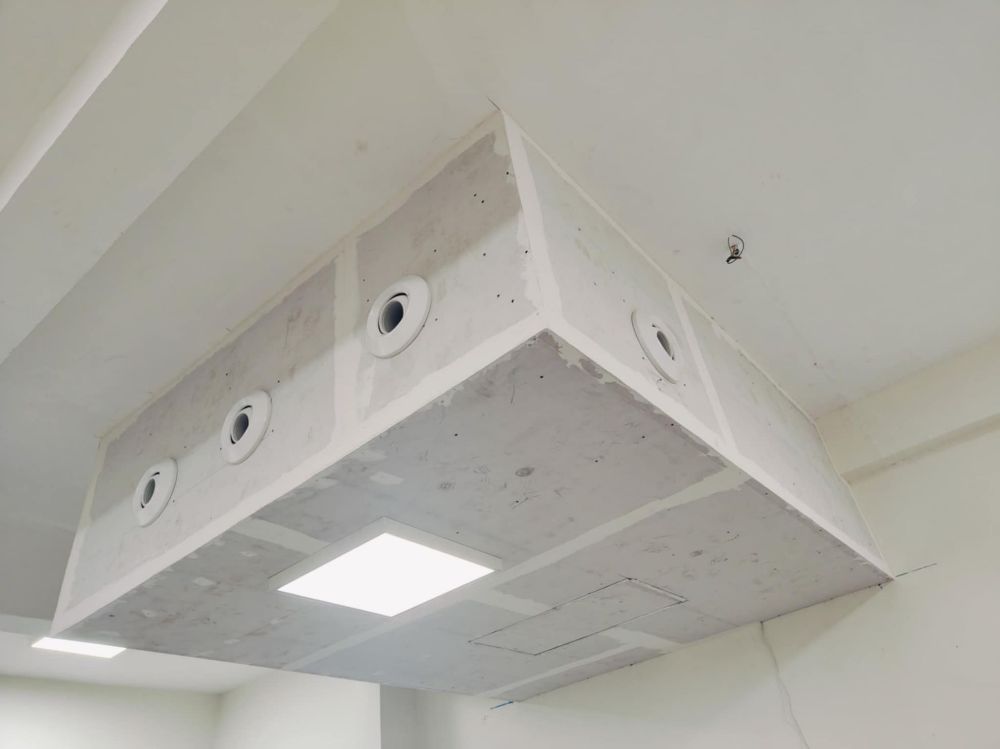
Contact TheSmartHVAC at [email protected] for the design and implementation of the HVAC system in Pharmaceutical industry.
